- MOE
- National Parks of Japan
- Bandai-Asahi National Park
- Guide of Highlights
main body
Highlights of Bandai-Asahi National Park
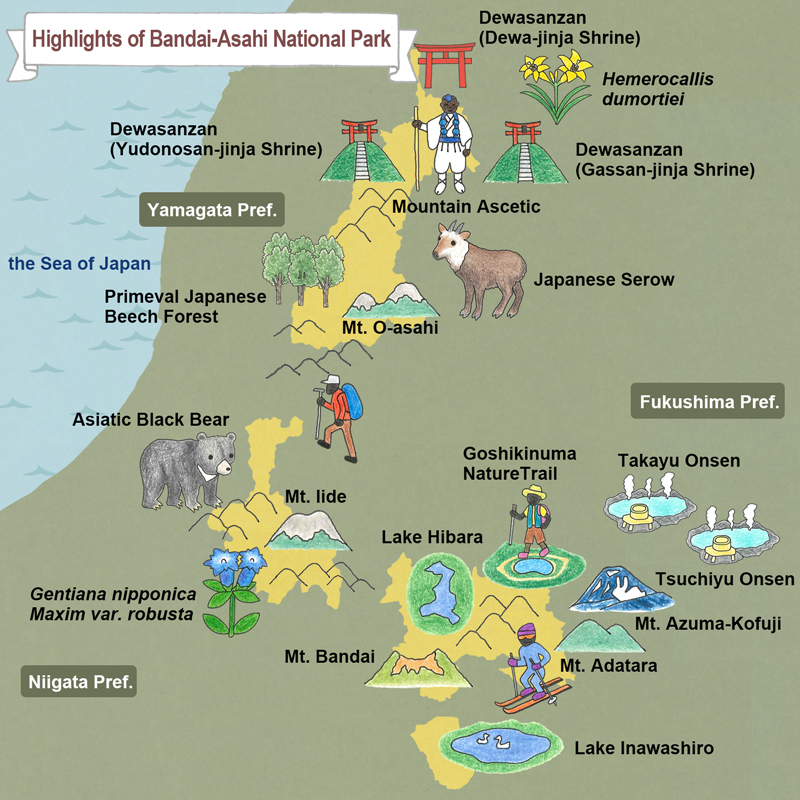 Mt. Haguro (Dewa-jinja Shrine)
Hemerocallis dumortiei
Mt. Gassan (Gassan-jinja Shrine)
Mountain Ascetic
Japanese Serow
Mt. O-asahi
Mt. Yudono (Yudonosan-jinja Shrine)
Primeval Japanese Beech Forest
Asiatic Black Bear
Mt. Iide
Gentiana nipponica Maxim var. robusta
Mt. Bandai
Lake Hibara
Goshikinuma Nature Trail
Takayu Onsen
Tsuchiyu Onsen
Mt. Azuma-Kofuji
Mt. Adatara
Lake Inawashiro
Mt. Haguro (Dewa-jinja Shrine)
Hemerocallis dumortiei
Mt. Gassan (Gassan-jinja Shrine)
Mountain Ascetic
Japanese Serow
Mt. O-asahi
Mt. Yudono (Yudonosan-jinja Shrine)
Primeval Japanese Beech Forest
Asiatic Black Bear
Mt. Iide
Gentiana nipponica Maxim var. robusta
Mt. Bandai
Lake Hibara
Goshikinuma Nature Trail
Takayu Onsen
Tsuchiyu Onsen
Mt. Azuma-Kofuji
Mt. Adatara
Lake Inawashiro
Dewasanzan (Mt. Haguro, Mt. Gassan, Mt. Yudono)
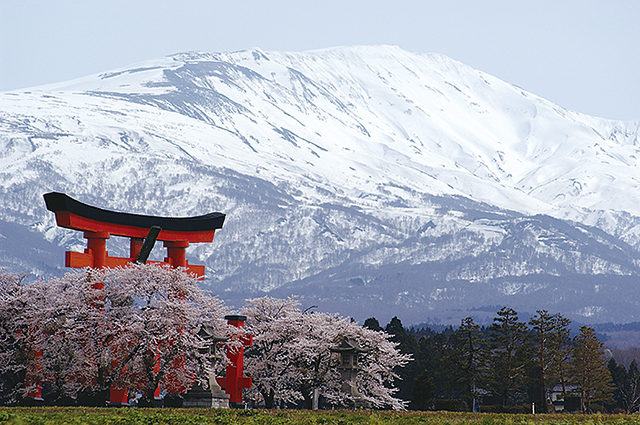
Dewasanzan (Mt. Haguro, Mt. Gassan, Mt. Yudono)
Since ancient times, visiting the Dewasanzan was called "Higashi no Okumairi (Visiting the east depths)." To this day, there are many visitors to come to Dawasanzan for various purposes including mountain worship, visiting the historical sites, shrines, and temples, mountain climbing, and summer skiing.
Mt. Haguro (Dewa-jinja Shrine)
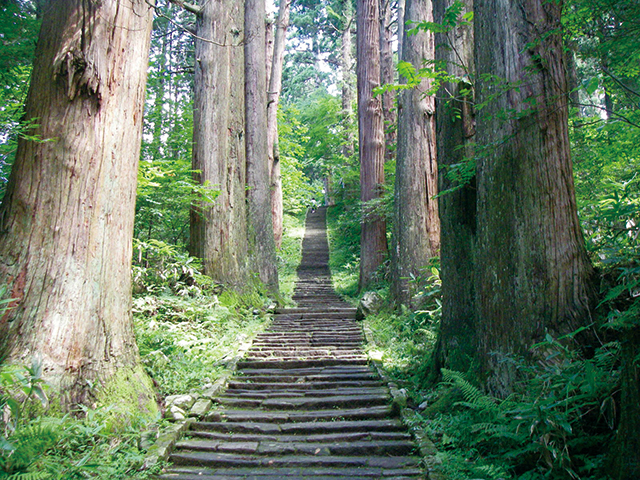
Mt. Haguro (Dewa-jinja Shrine)
The entrance path leading to the Dewa-jinja Shrine at the peak has 2446 steps and is lined with cedars that are a Special Natural Monument of Japan. Additionally, along the way is a five-story pagoda that is a national treasure.
Mt. Gassan (Gassan-jinja Shrine)
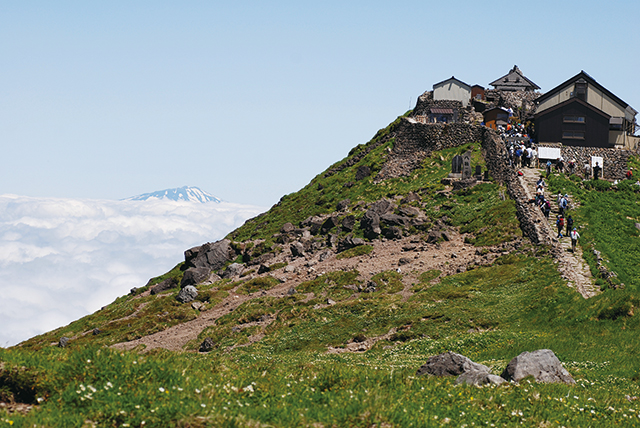
Mt. Gassan (Gassan-jinja Shrine)
The many ascetics and worshipers climb this mountain to visit the Gassan-jinja Shrine at the summit. At Gassan Ski Resort, visitors can enjoy summer ski every year usually until the end of July.
Mountain Ascetic

Mountain Ascetic
Mt. Haguro, Mt. Gassan, and Mt. Yudono are referred to as Dewasanzan, and are visited by many ascetics as a site of mountain worship.
Mt. Yudono (Yudonosan-jinja Shrine)
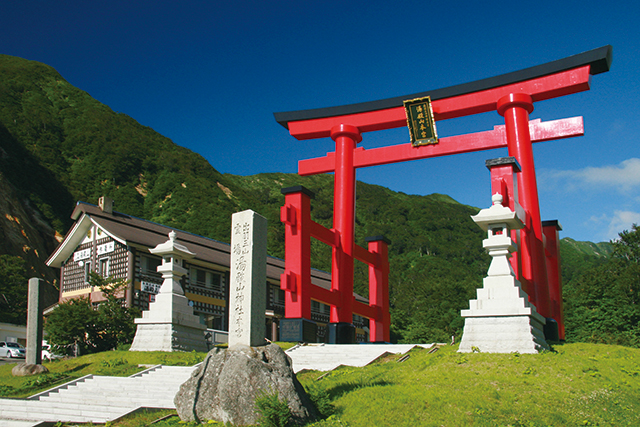
Mt. Yudono (Yudonosan-jinja Shrine)
Yudonosan-jinja Shrine can be found on the hillside of Mt. Yudono. Since ancient times, human intervention has been limited, and this shrine is one of the few in Japan where a main building of a shrine was not constructed.
Midagahara
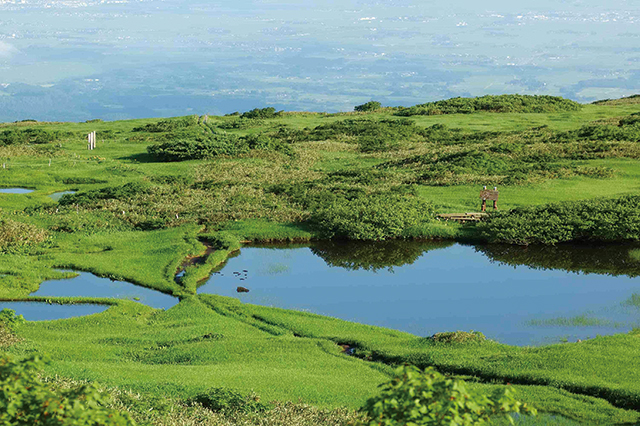
Midagahara
Midagahara, a lava plateau on the north face of Mt. Gassan, has multiple groups of marshes spread out over the area. After the snow melts in early summer, the marshes are covered with the blooming flowers of a multitude of alpine plants.
Lake Otori-ike

Lake Otori-ike
The uppermost part of the Otori River is Lake Otori-ike, a damned lake surrounded by a Japanese beech forest. Known for the mysterious fish "takitaro," this lake is a popular location for anglers during the fishing season.
Mt. O-asahi

Mt. O-asahi
This mountain is the main peak in the Asahi Mountain Range with a peak 1,870 m above sea level and is one of the 100 Famous Japanese Mountains. The best way to enjoy this area is to traverse the entire length of the mountain range along the main ridge starting with Mt. O-asahi, a trek that takes about two to three nights or more.
Nukumidaira

Nukumidaira
Nukumidaira is a thin and long, gently sloping piece of land in the mountainous areas on the northeast side of the Iide Mountain Range. A 5.5 km footpath is maintained in a lush Japanese beech forest, and visitors can enjoy forest therapy programs.
Mt. Iide (Iide Honzan)

Mt. Iide (Iide Honzan)
This mountain is the main peak of the Iide Mountain Range with a peak 2,105 m above sea level and is one of the 100 Famous Japanese Mountains. Along with the Asahi Mountain Range, these mountains are called the "Tohoku Alps" with rows of mountains that have depth and are graceful to the eye.
Mt. Nishi-Azuma
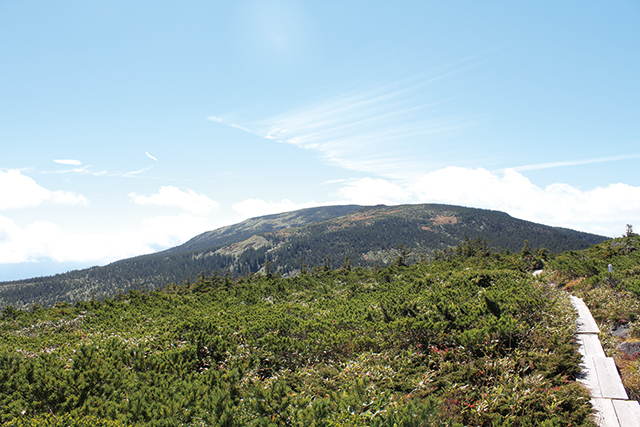
Mt. Nishi-Azuma
With a peak that is 2,035 m above sea level, Mt. Nishi-Azuma is the highest peak of Mt. Azuma (Azuma Mountain Range) and is one of the 100 Famous Japanese Mountains. The gentle form of the mountain is covered with a subalpine coniferous forest and the high moor nearby is rich with alpine plants.
Jododaira and Mt. Azuma-Kofuji

Jododaira and Mt. Azuma-Kofuji
Jododaira is located at the midpoint in the tourist road Bandai-Azuma Skyline at a height of 1,580 m above sea level. Visitors can enjoy trekking starting off in Jododaira and going through Mt. Azuma-Kofuji and Mt. Issaikyo before arriving at Mt. Higashi-Azuma.
Mt. Azuma-Kofuji

Mt. Azuma-Kofuji
One of the Azuma Mountain Range (1,707 m above sea level). Travel to nearby Jododaira by car or shuttle bus, and take the trip around the rim of the crater.
Lake Hibara

Lake Hibara
A dammed lake was formed by volcanic activity of Mt. Bandai during the Meiji Period. Campsites and nature exploration tracks are available in the vicinity, and pleasure cruises provide pleasant sights on the lake. Ice smelt fishing on the frozen lake surface is possible in winter.
Goshikinuma Nature Trail
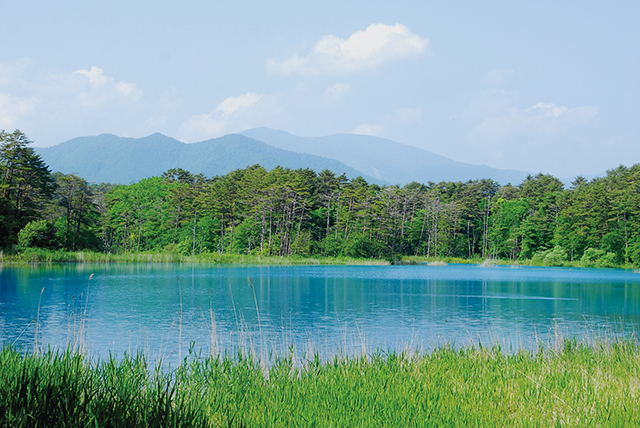
Goshikinuma Nature Trail
A trail that is 4 km long is maintained around the lakes and marshes of Goshiki Pond and visitors can enjoy more than 10 different marshes. Depending on the weather and time of day that you visit there, the colors of the marshes change, making this place you want to visit again and again.
Oguninuma
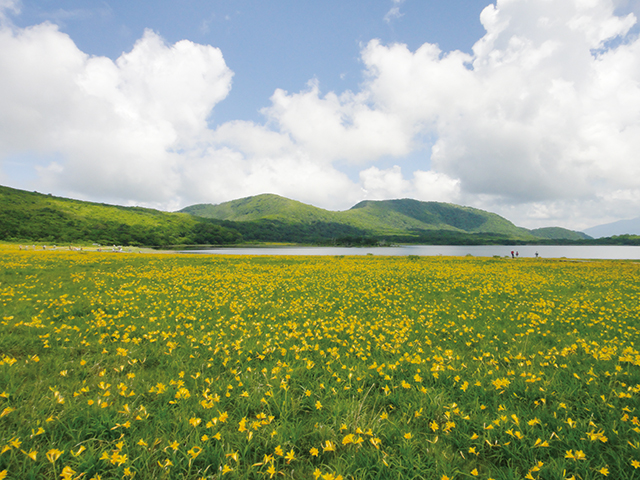
Oguninuma Pond
Located to the west of Mt. Bandai, you can see the Hemerocallis dumortiei in full bloom in the wetlands to the south of the marshes from the end of June to early July. An 800 m wooden path is maintained in the wetlands and visitors can explore the area with ease.
Mt. Adatara
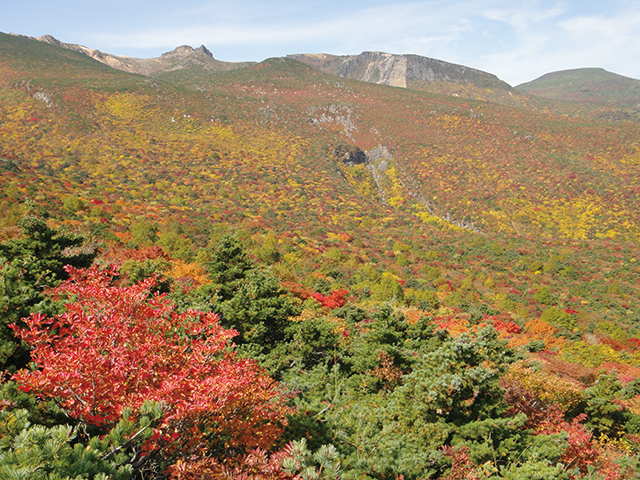
Mt. Adatara
This volcano has a peak that is 1,700 m above sea level and is one of the 100 Famous Japanese Mountains. It is famous for being represented in Koutaro Takamura's Chieko-sho (Portrait of Chieko). This mountain is relatively easy to climb, and visitors can enjoy the alpine plants and splendid view.
Mt. Bandai
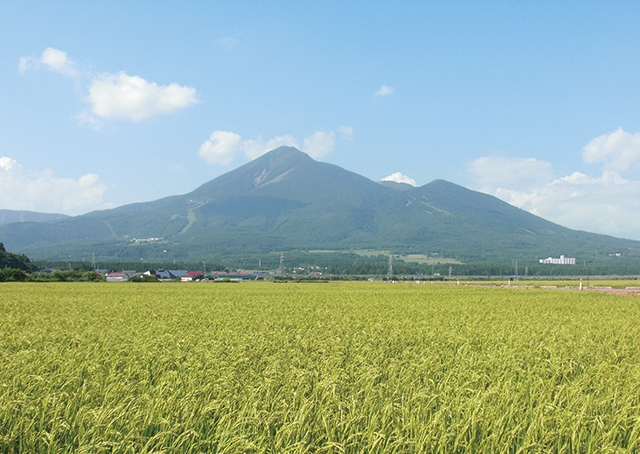
Mt. Bandai
Looming high to the north of Lake Inawashiro, Mt. Bandai is a volcano with a peak that is 1,816 m above sea level and is one of the 100 Famous Japanese Mountains. In the folk song "Aizu Bandaisan," the mountain is called the mountain of treasures and it is loved by many as a symbol of Aizu.
Lake Inawashiro

Lake Inawashiro
This lake is the fourth largest in Japan. The surface of the lake is beautiful like a mirror, which is how it got its other name, Lake Tenkyo (Sky Mirror Lake). Additionally, this lake is famous as the stopover point for migratory birds such as the Tundra swan.
Wildlife & Plants
Lilium rubellim
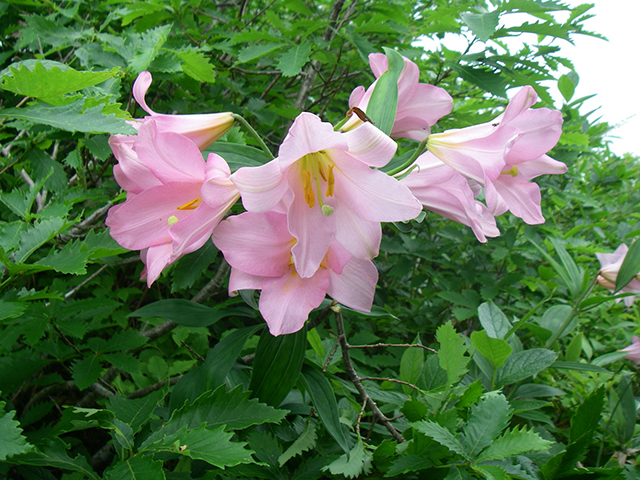
Lilium rubellim
From spring to summer, climbers along the mountain trail between Mt. Ko-asahi and Mt. O-asahi on the Asahi Mountain Range are greeted by the Lilium rubellum surrounding the paths. Many climbers come from afar to enjoy the sight of the flowers.
Gentiana nipponica Maxim var. robusta
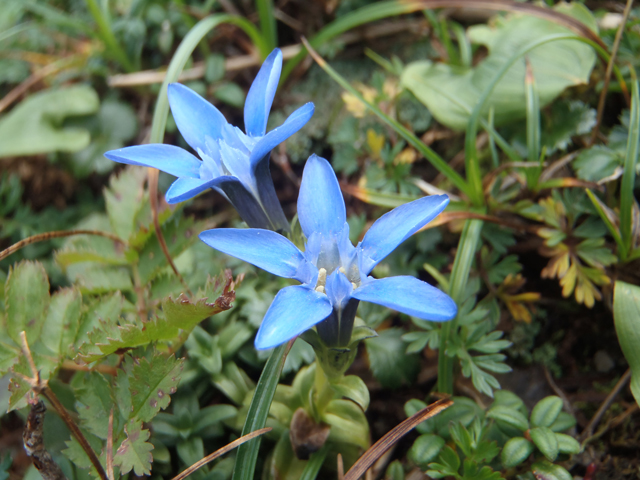
Gentiana nipponica Maxim var. robusta
A mutation of Gentiana scabra (Rindou), characteristic of the Iide Mountain Range. Blooms in July and August with a bluish-purple flower.
Hemerocallis dumortiei

Hemerocallis dumortiei
Frequently found in large clusters on grasslands in mountain areas. In the Bandai-Asahi National Park, large clusters are found in Oguni Pond in Kitashiobara Village in Fukushima Prefecture.
Primeval Japanese Beech Forest
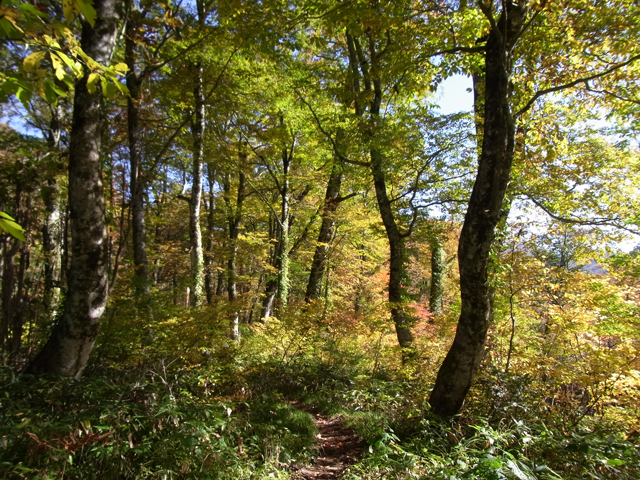
Primeval Japanese Beech Forest
The bases and slopes of the Iide Mountain Range are covered in primordial forest. A primitive landscape of primeval Japanese beech forests remains.
Japanese Serow (Capricornis crispus)
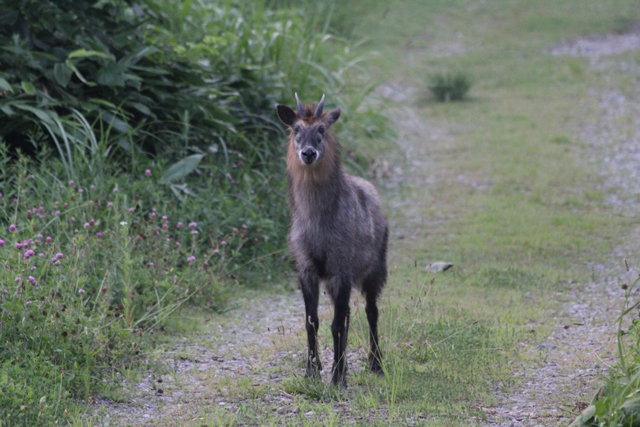
Japanese Serow (Capricornis crispus)
While resembling a deer, it is actually a member of the cow family. Found in the forests of the park. Designated as a National Special Natural Monument.
Asiatic Black Bear (Ursus Thibetanus japonicus)
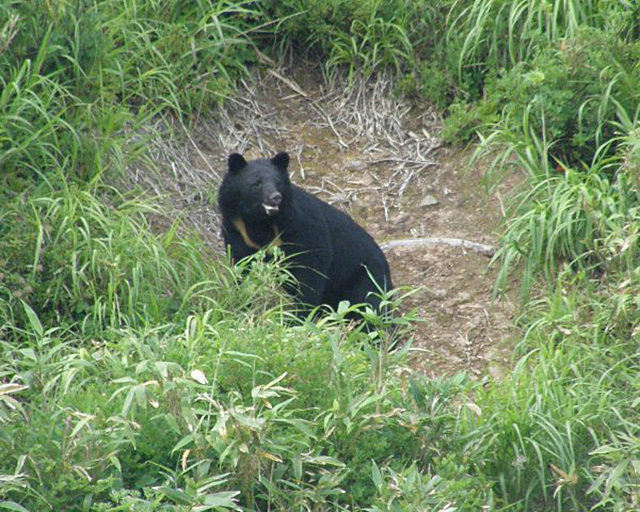
Asiatic Black Bear (Ursus Thibetanus japonicus)
The largest terrestrial mammal on Honshu. The bear is distinguished by the crescent/V-shaped white marking on the chest, so it is called "tsukinowaguma (moon-ring bear)" in Japanese. Found in the forests of the park. Understand the ecology, and avoid the bears.
Activities
Onsen (Hot Springs) (Takayu Onsen, Tsuchiyu Onsen)
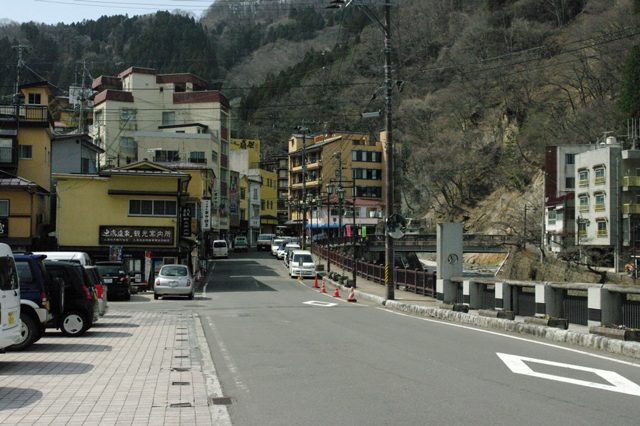
Onsen (Hot Springs) (Takayu Onsen, Tsuchiyu Onsen)
A number of hot springs are found in Takayu and Tsuchiyu in the vicinity of the Azuma Mountain Range thanks to the volcanic activity of the region. Enjoyed by travellers and mountaineers for relaxation.
Fishing
Fishing
Along the far upstream reaches of the Otori River within the Asahi Mountain Range lies Lake Otori-ike, a dammed lake surrounded by Japanese beech trees. Known from legends of the mysterious fish "takitaro," the lake bustles with visitors enjoying fishing.
Hiking
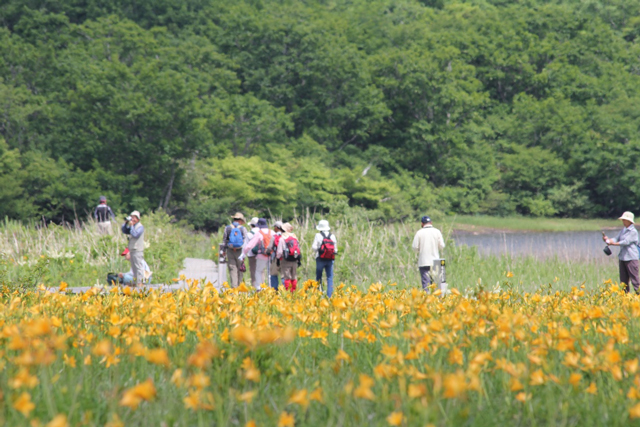
Hiking
Nature exploration tracks are available in Goshiki Pond and Jododaira (both in Fukushima Prefecture), and the Midagahara High Moor (Yamagata Prefecture).
Mountain Climbing
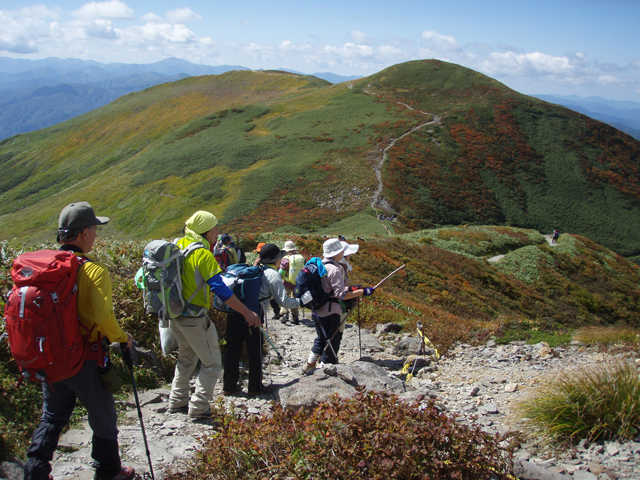
Mountain Climbing
Many fascinating mountains are found within the Bandai-Asahi National Park (e.g., Mt. Bandai, Azuma Mountain Range, Iide Mountain Range), and are enjoyed by mountaineers.
Snowshoe Trekking
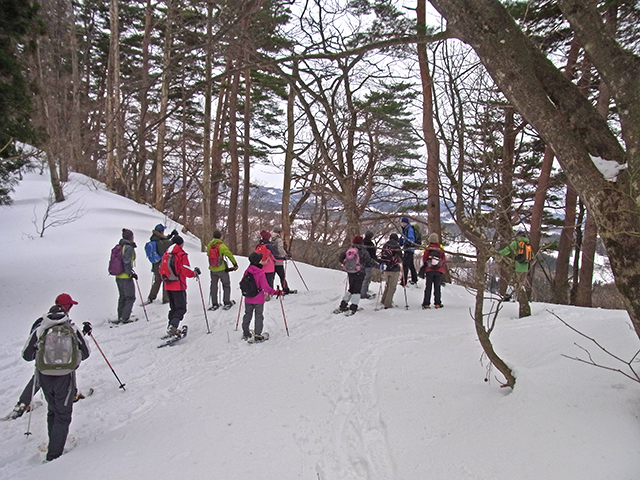
Snowshoe Trekking
Snowshoe trekking, a way to walk freely through the snow, is growing in popularity.
The visitor centers at Urabandai and Mt. Gassan hold snow trekking events. Even uncertain first-time participants are welcomed to take part.
Skiing
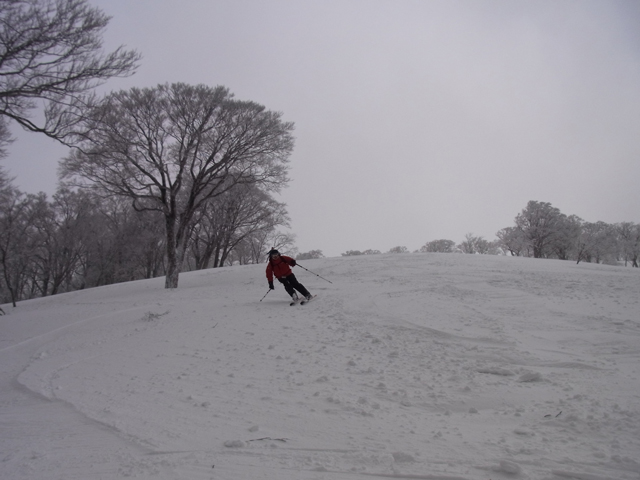
Skiing
Many ski slopes are found in the Bandai-Azuma and Inawashiro areas of the Bandai-Asahi National Park. Visited by large numbers of skiers in the winter season.
